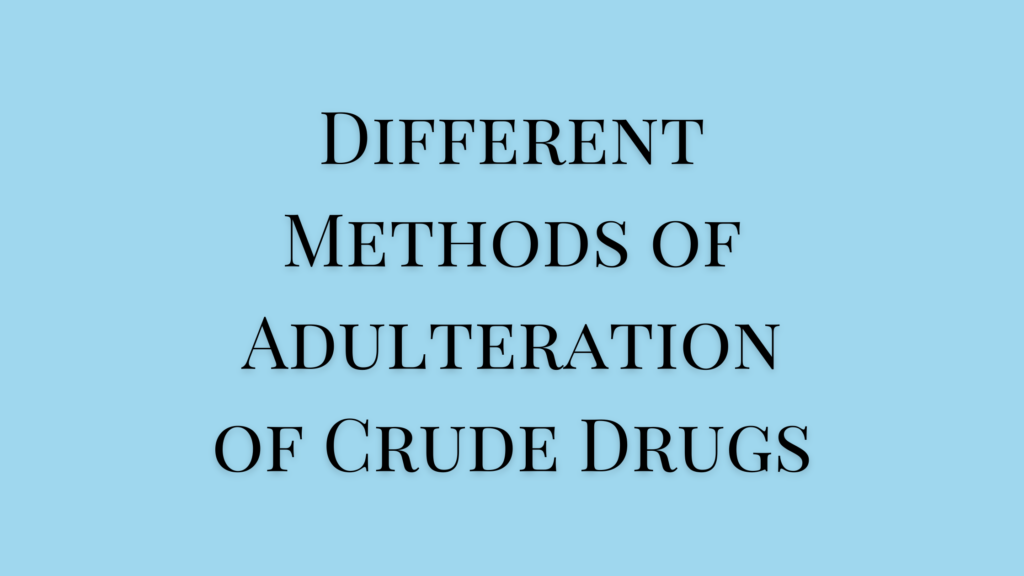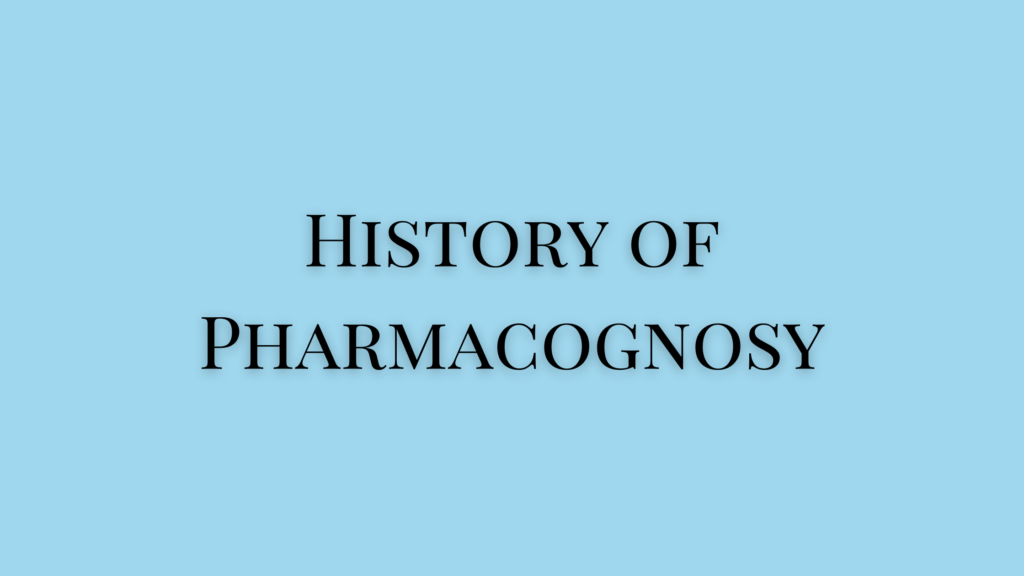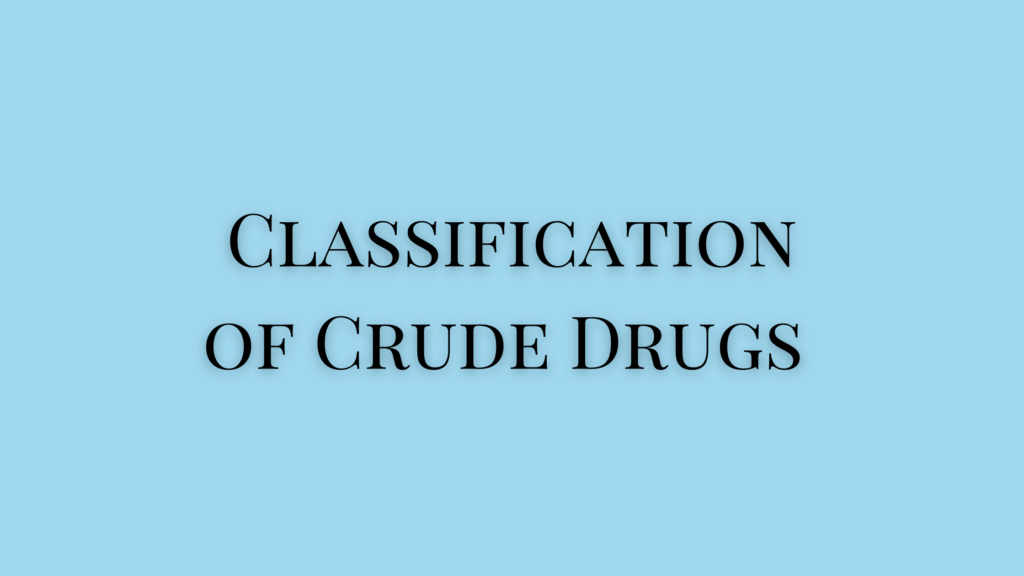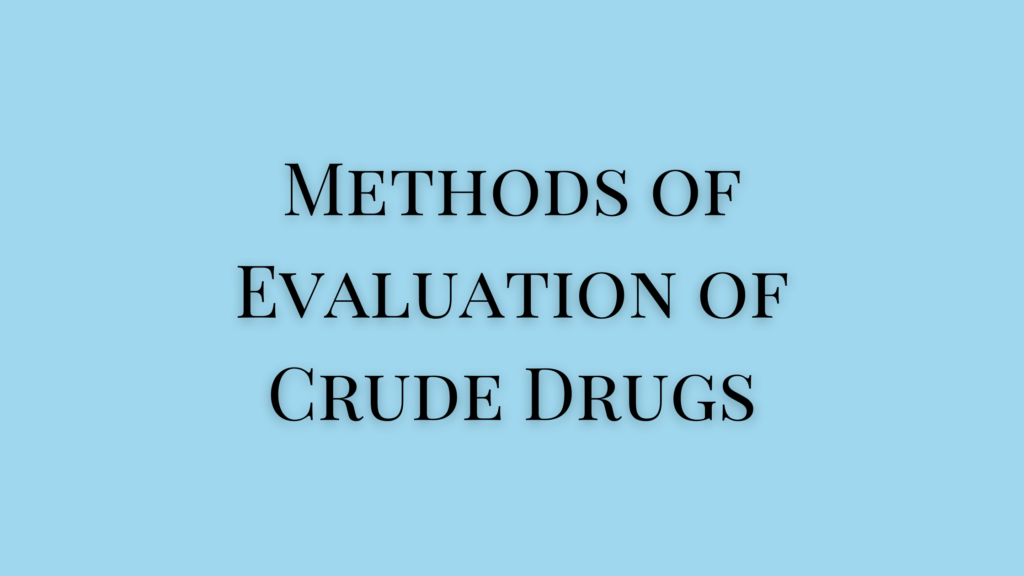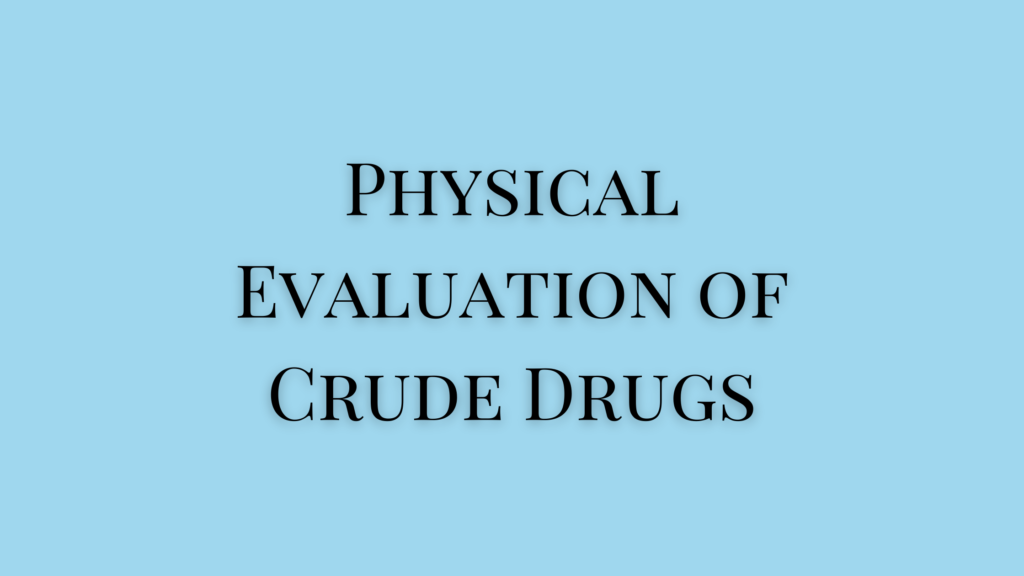Adulteration is the intentional or unintentional substitution of original crude drugs, fully or partially with substances of inferior quality that have similar morphological or chemical properties, to enhance the profits. Adulteration of crude drugs may cause the induction of impurities, deterioration of the drug, or render the crude drugs ineffective or lower their potential. We will discuss the different methods of adulteration of crude drugs here.
Types of Adulteration of Crude Drugs
It may be due to carelessness, lack of proper evaluation protocol, or intentional. Depending on this there are two methods of adulteration of crude drugs.
- Unintentional adulteration or indirect adulteration
- Intentional adulteration or direct adulteration
Unintentional Adulteration
Unintentional or indirect adulteration happens due to negligence. It may happen due to the presence of inactive ingredients in the mix, growing conditions of the plants, geographical reasons, fault processing, or issues in the storage of crude drugs. All these happen unintentionally and thus they are called unintentional adulteration.
Sometimes, foreign substances may be included in the crude drugs due to improper evaluation, processing, or storage. Such adulterants are called unintentional adulterants. Seeds of weeds, low-quality substances, soil mixture, impurities, etc are examples of unintentional adulterants.
Intentional Adulteration
Direct adulteration or intentional adulteration is the process of deliberate substitution of the crude drug with other substances. It can be a partial or full substitution with similar substances that are naturally available or artificially created for this purpose.
These intentional adulterants may not have any therapeutic or chemical value. This causes the crude drug to be of inferior quality. Sometimes, parts of the same plants that have no active constituents or are exhausted are added as adulterants.
Sand, stones, and artificially produced substances for the sole purpose of adulteration are all used here. This is commonly seen with volatile oils where inferior oils of no activity are added.
Different Methods of Adulteration of Crude Drugs
The various types of adulteration of crude drugs are,
1. Substitution With Sub-Standard Commercial Varieties
Adulterants having a morphological or chemical resemblance to the original crude drug and similar therapeutic traits are added. These will be substandard quality and cheaper.
Eg. Strychnous nux-blanda and Strychnous potatorum are usually used for Strychnous nuxvomica. Indian senna is usually adulterated with Arabian senna. Cochin, African or Japanese ginger are used in place of medicinal ginger.
2. Substitution With Superficially Similar But Inferior Drugs
Here, the adulterants used are superficially similar to the original drug but they will not have any therapeutic or chemical value. They look authentic due to their morphological similarity.
Eg. Using Ailanthus leaves for Belladonna leaves. Dried flowers of Carthamus tinctorious for saffron.
3. Presence of Vegetative Part From The Same Plant
Smaller plants of the same variety or similar plants growing together that resemble the medicinal plant are often mixed with it. They are indistinguishable as they may have similar appearances and odor. The stem portion of the medicinal plant may be mixed with the leaves as in the case of senna. Sometimes moss and epiphytes are mixed with the bark of cinchona.
4. Substitution With Exhausted Drug
The adulterants used here are the same drug but those have no value anymore. They are mainly the parts that are already used to extract its active constituents. This is mainly used for the adulteration of drugs containing volatile oils. Even though they are exhausted they might still be similar in appearance, taste, and aroma. Cloves, coriander, and fennel seeds are common examples.
5. Substitution With Artificially Manufactured Substances
Artificial substances are manufactured to resemble the original drug and are mixed in. This is usually practiced to increase profit by having a lower quantity of the drug. Eg. using paraffin wax for bes wax and compressed chicory instead of coffee.
6. Using Synthetic Chemicals
Artificial chemicals are added to the crude drug which will enhance the natural properties of the crude drug. Adding citral to citrus oils, benzoate to balsam, etc are examples.
7. Harmful Adulterants
In the case of liquids and unorganized drugs, harmful waste materials are added as adulterants. Adding limestone in asafoetida, glass pieces in colophony, rodent fecal matter in cardamom seed, etc are such practices.
8. Adulteration of Powders
Powdered drugs are adulterated with external substances. They will have the same color, density and texture as the original drug. Exhausted ginger powder is added to powdered ginger, and liquorice powder is added with olive stones.
9. Other Types of Adulteration
- Timely collection of the crude drug is essential to maintain its potency. Collecting at the wrong time or season may render them inactive. Such wrong collection can also be considered adulteration.
- When preparing the drug, it is essential to remove or discard undesirable parts. Otherwise, it will contaminate or end up getting adulterated.
- Most crude drugs require drying of the plant parts. Improper drying or neglecting the requirements of proper conditions would lead to adulteration with unwanted materials.
- When storing crude drugs, there are certain criteria that should be maintained. Failing to follow these will cause unintentional adulteration with the presence of microbes or moisture content.
References
- https://vipw.in/images/130faf0c94667539aceadcb1940f2ded.pdf
- Shah, Biren N, Avinash Seth. (2010). Textbook of Pharmacognosy and Phytochemistry. Elsevier.
- Adulteration and Evaluation of Crude Drugs
